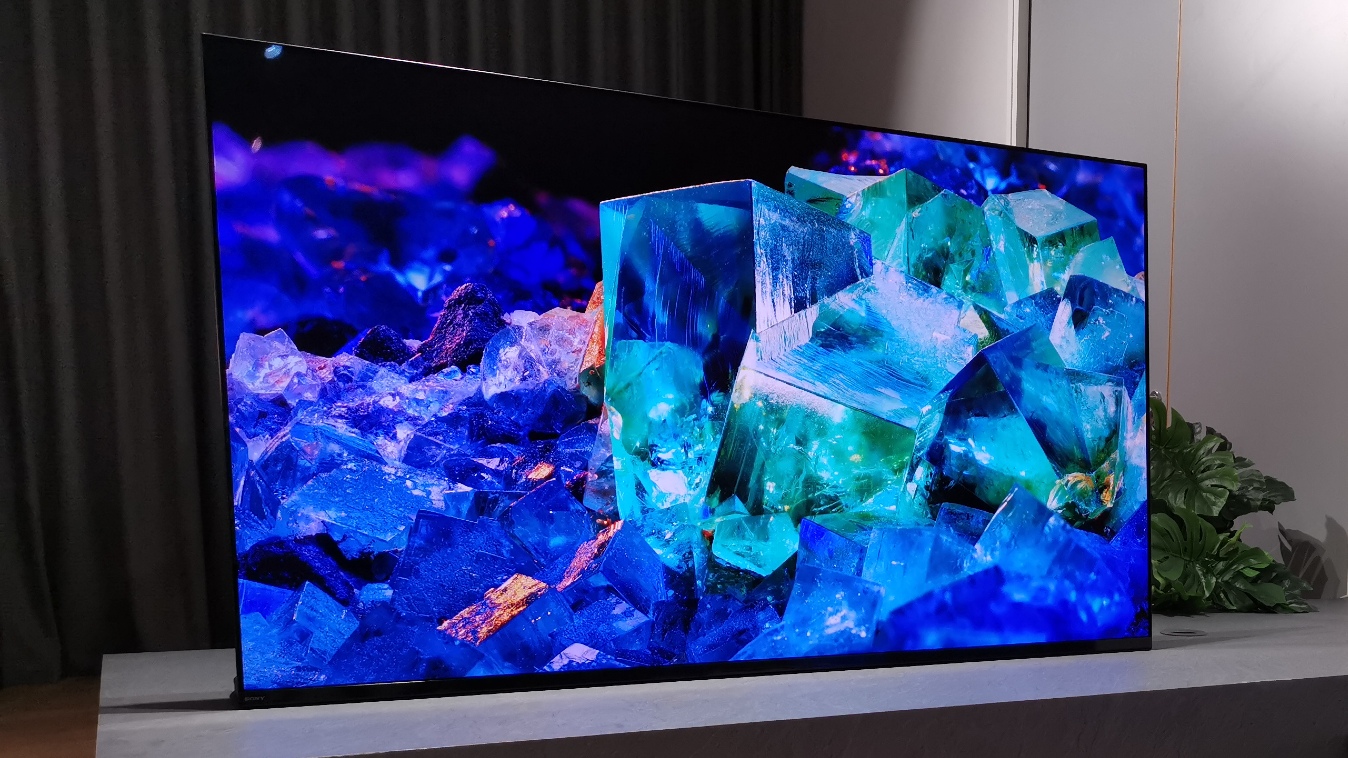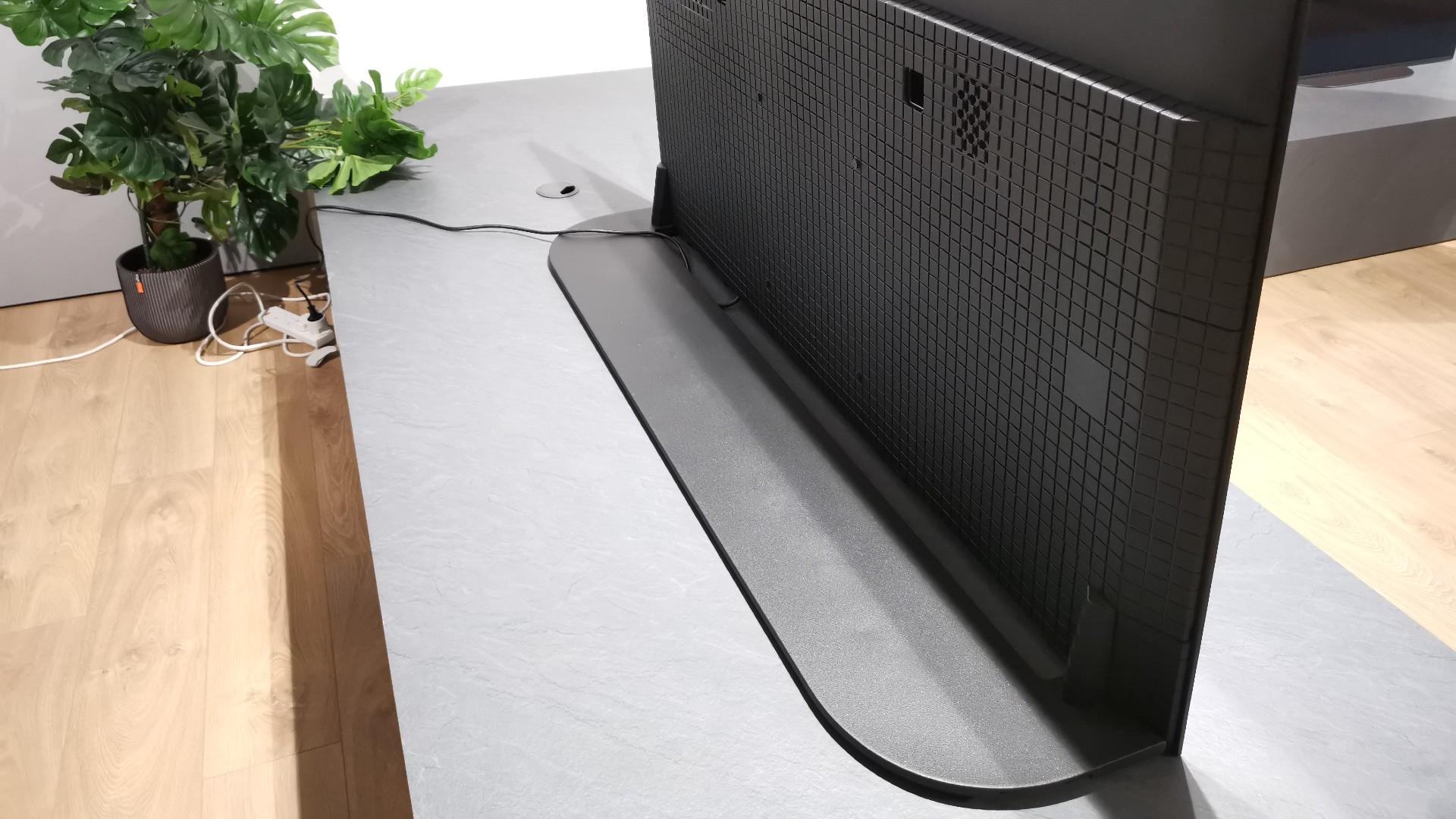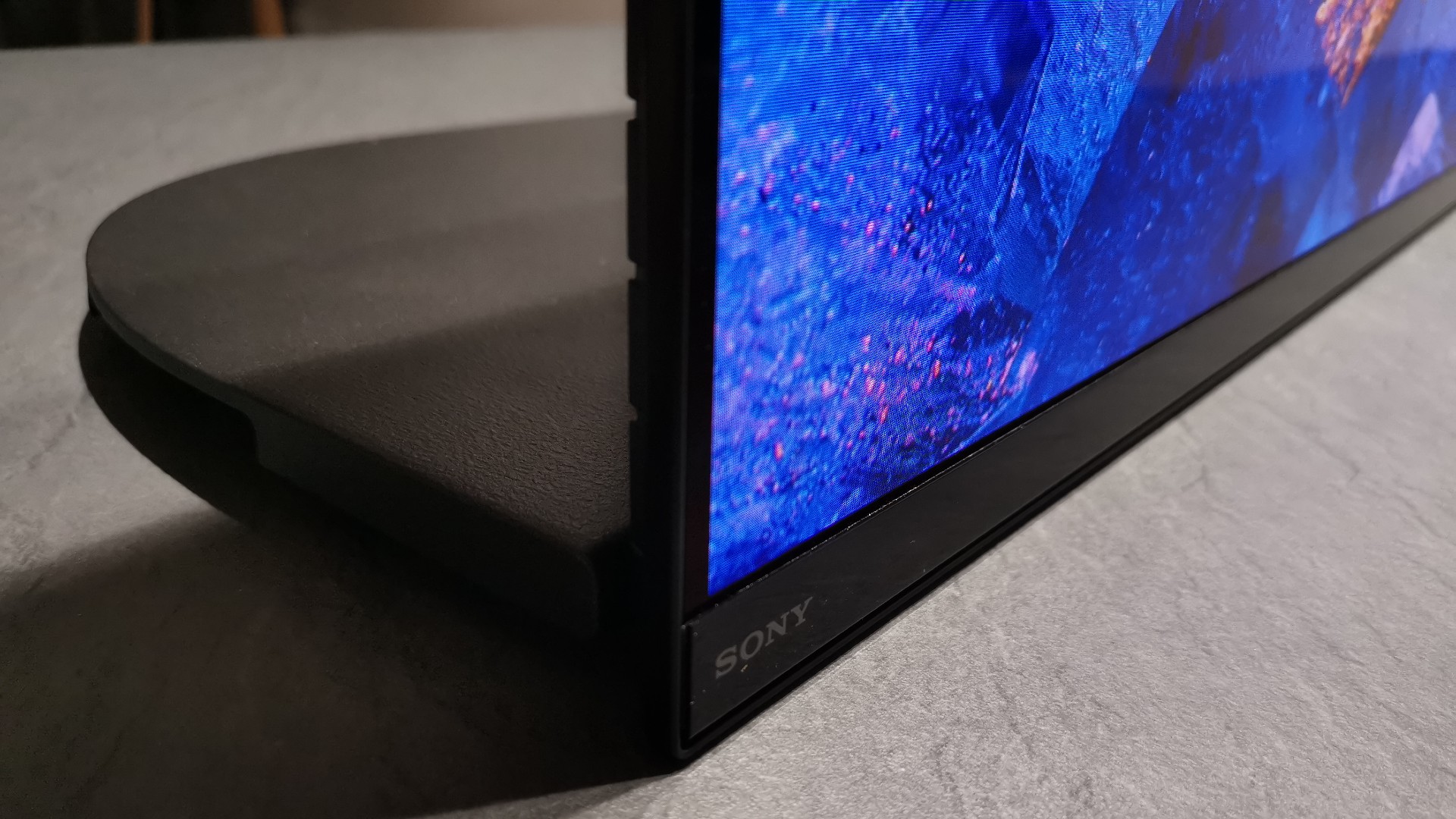Early Verdict
The Sony Bravia A95K QD-OLED TV is a stunner of a flagship 4K TV. Beautifully designed and offering high-brightness HDR with extreme color depth, it makes full use of its innovative QD-OLED panel. The field is still wide open right now, but so far we're rating it an early contender for screen of the year…
Pros
- +
High brightness QD-OLED panel
- +
Supreme color depth
- +
Premium design
Cons
- -
Some presets need work
- -
Won’t come cheap
- -
Questionable audio quality
Why you can trust TechRadar
Update: We now have a full Sony XR-A95K review and (spoiler alert) it's a truly incredible TV.
Sony is the first TV manufacturer to show a QD-OLED (Quantum Dot OLED) TV. The Master Series Bravia A95K is the flagship for the Sony 2022 TV range, and pushes the envelope when it comes to absolute picture quality.
We’ve had an early hands on, and it knocked our socks off.
Based on an early demo of the set (a pre-production model, it should be stressed), held at Sony’s Weybridge HQ in the UK, we can confirm it delivers a higher level of brightness and greater color volume than standard OLED panels.
The screen also features an upgraded version of the brand’s Cognitive Processor XR processor, tuned to exploit the potential of QD OLED panels, and a revised version of the Sony’s Acoustic Surface Audio+ technology.
So does it hold up to the hype? So far, it absolutely does.
Price and availability
Sony has yet to officially confirm the price of the A95K. But as a ballpark, the screen, which will ship in 55- and 65-inch screen sizes, is expected to launch at around £3000/$3000 and £4000/$4000, respectively.
Expensive? Definitely, but we would expect a hefty premium on QD-OLED flatscreens, particularly given that the technology is new and production yields are almost certainly going to be relatively poor.
As for availability, it’s reasonable to expect a roll out sometime between April and June, but with shipping delays it might not be available in some territories until later in the year.

Design and features
The A95K definitely has designer good looks. The panel recalls Sony’s original A1 OLED, which had a similar lean-back monolith design; this proved a bit divisive with buyers back in the day. There’s no visible stand holding up the glass, and only a thin bezel surrounding the image. The screen sits virtually flush to the ground. Peer around the back, and you’ll see the counterweight support which does all the work.
There’s a 3 degree lean-back on this model, which indicates that it should be placed on low AV furniture for the best viewing angle. There is an alternate install option, where the stand can be reversed, making it visible from the front. The idea here is that you could push the set closer to a wall if required.
All inputs and outputs are hidden behind covers on the rear, ensuring sleek looks from any angle. Significantly, only two of the screen’s HDMI inputs are able to support high-frame-rate 4K/120fps gameplay.
The set comes with a new slim premium remote control, which is aluminum and backlit. When you pick it up, the keys light up. It’s a nice looking wand, with dedicated keys for streaming services.
Also in the box is Sony’s new Bravia Cam, which magnetically connects at the top of screen, and offers advanced video camera functionality.
Performance
Long story short: QD-OLED panel technology lives up to the hype - the Sony A95K is bright for an OLED, and enjoys huge color vibrancy.
For our comparison, a 65-inch A95K was placed alongside a 2021 A90J OLED, which is no slouch in the picture stakes. Providing a visual reference for content was a venerable Sony BVM-X300 pro mastering monitor.
While QD-OLED is an evolution of the familiar OLED display family, it’s worth noting that they’re quite different in terms of structure: There’s no requirement for white sub-pixel, which is used in OLED panels popularized by LG Display, to add brightness but limits the theoretical depth of colors possible.
Instead, a quantum dot filter allows the QD-OLED panel to combine high brightness with an expansive color volume. In short, the Sony A95K can deliver sensationally deep, vivid reds, and glorious greens.
To stretch the new panel for our demo, a variety of test sequences were used, including scenes from the live action Cruella (principally to show off color fidelity) and Monster Hunter (to reveal black level performance and banding/gradation prowess). Run in its Custom image preset, the A95K proved an almost identical match with the pro mastering monitor, in all tests.
That said, however, while the A95K clearly edged past last year’s non QD OLED model, the differences were subtle, as mandated by the cinema preset.
Purely by coincidence, the day previous, I had been looking at LG’s incoming G2 OLED, featuring LG Display’s latest OLED panel with heat dissipation technology - and that model exhibited similar advantages over its 2021 kith and kin. Would the Sony QD-OLED and LG G2 be that far apart in their respective cinema modes? We didn’t have them side by side, but I suspect not.

Where the QD-OLED really began to move ahead, was when Sony effectively let it off the leash, by running it in Standard and Vivid modes; these proved a marriage made in AV heaven. Bespoke demo footage, of a country wedding, looked sensational.
In Standard mode, the A95K’s images really began to pop, not so much in terms of specular HDR highlights but overall average picture level. The A95K has a clear advantage over regular OLED TVs in this regard, and positions QD-OLED as a viable bright room/ living room alternative to the best LED models.
Similarly, Vivid further elevated the screen’s red and green performance. It looked garish but fantastic.
The catch, of course, is that few people will opt to view (live action) content in Vivid mode. And if you’re a discerning home cinema enthusiast, I’ll wager your natural inclination will be to view on the set’s Custom and Netflix calibrated cinema modes, and here the potential of the panel is left largely untapped.
Audio quality
This is one area where the jury remains out, as our demo session with the set did not include an opportunity to put it through its sonic paces. But I’m optimistic it’ll sound good.
Sony rates the Acoustic Surface Audio Plus sound system on the A95K as 2.2, which compares to 3.2 on the cheaper A80K. The brand says this shortfall is largely due to changes in the actuators used, necessitated by the QD OLED panel; apparently the new panel structure makes a difference to their implementation.
On the plus side, Sony says the actuators on the A95K are slightly larger, and more powerful, than the units on the A80K. Let’s take this at face value.
The set also has a center speaker mode, which allows the TV’s audio system to function as the center speaker in a multichannel sound system.
Early verdict
In so many ways, Sony’s QD-OLED A95K is ahead of the game. When it comes to picture quality, it has the headroom to lift performance above and beyond the mastering norm, and provides a level of visual future-proofing we’ve not seen before. Unleashed, it is astonishingly good.
But is it actually worth the price premium against more conventional screens, particularly if 4K streaming services are default content? In truth, we won’t know the answer to that, at least until we’ve had a few of 2022’s finest on our test bench. The differences in real world viewing may be less obvious than you might expect.
What we can confirm though is that the Master Series A95K looks to be a remarkable TV, and an early front-runner for screen of the year.
- Looking for something sooner? Check out our guide to the best TVs available now
Steve has been writing about AV and home cinema since the dawn of time, or more accurately, since the glory days of VHS and Betamax. He has strong opinions on the latest TV technology, Hi-Fi and Blu-ray/media players, and likes nothing better than to crank up his ludicrously powerful home theatre system to binge-watch TV shows.
What is a hands on review?
Hands on reviews' are a journalist's first impressions of a piece of kit based on spending some time with it. It may be just a few moments, or a few hours. The important thing is we have been able to play with it ourselves and can give you some sense of what it's like to use, even if it's only an embryonic view. For more information, see TechRadar's Reviews Guarantee.

